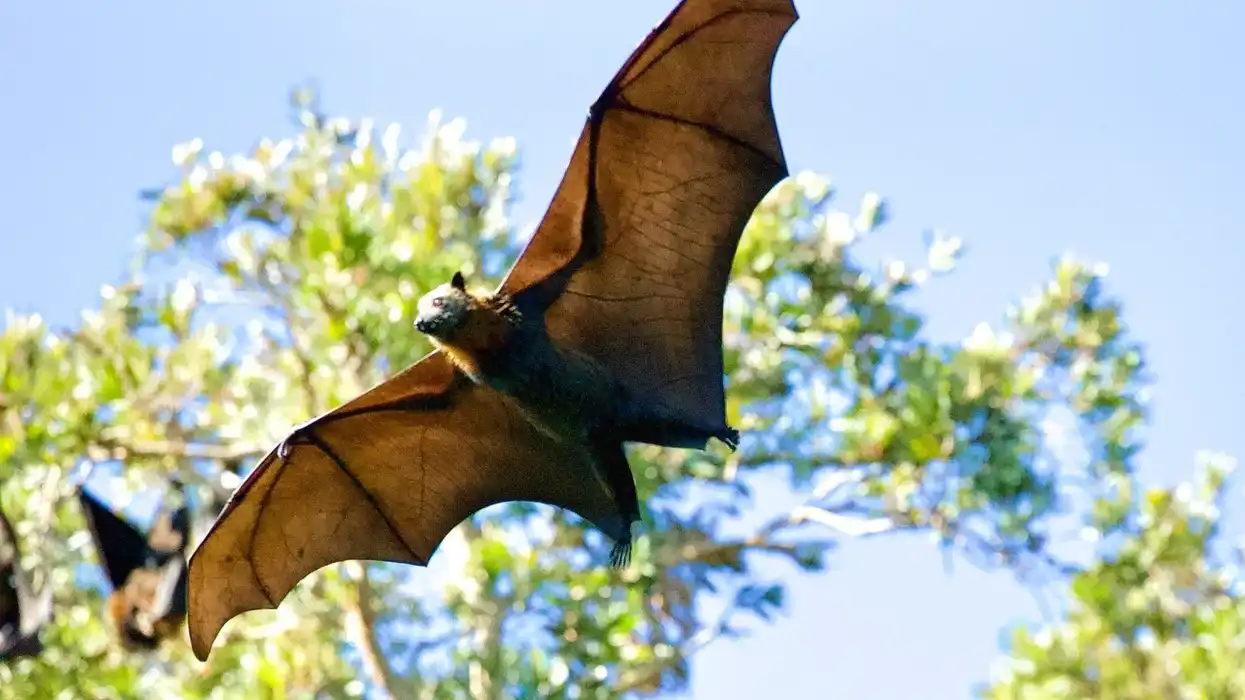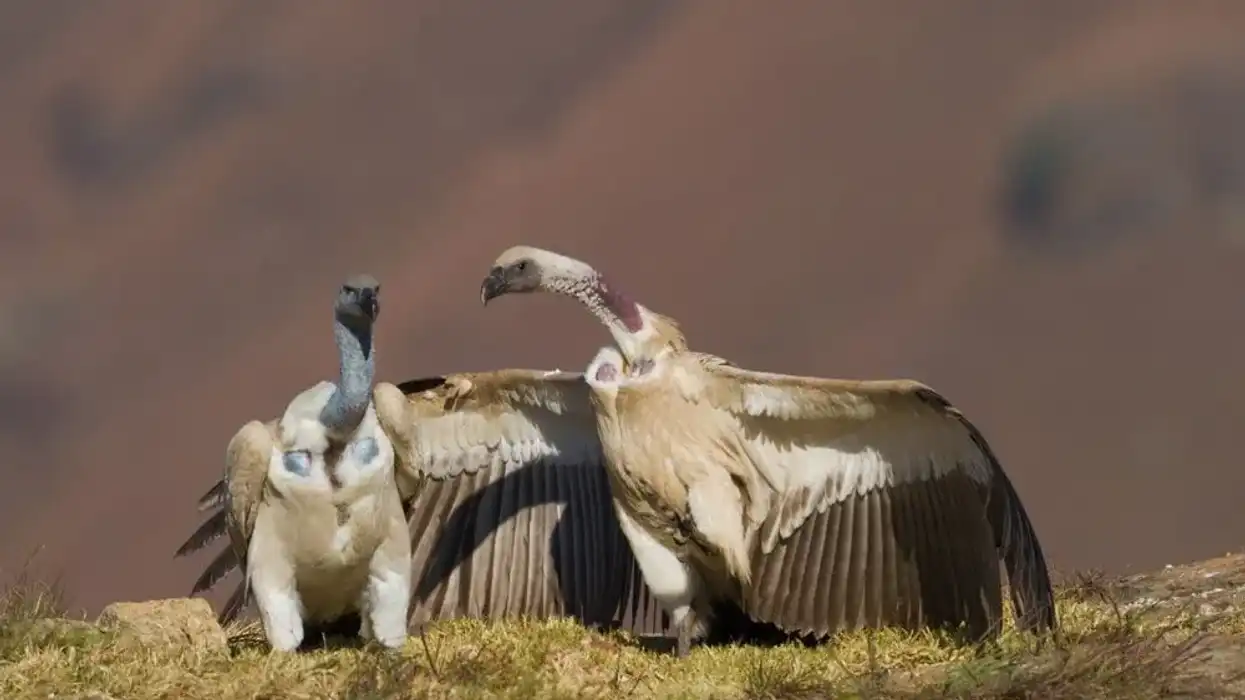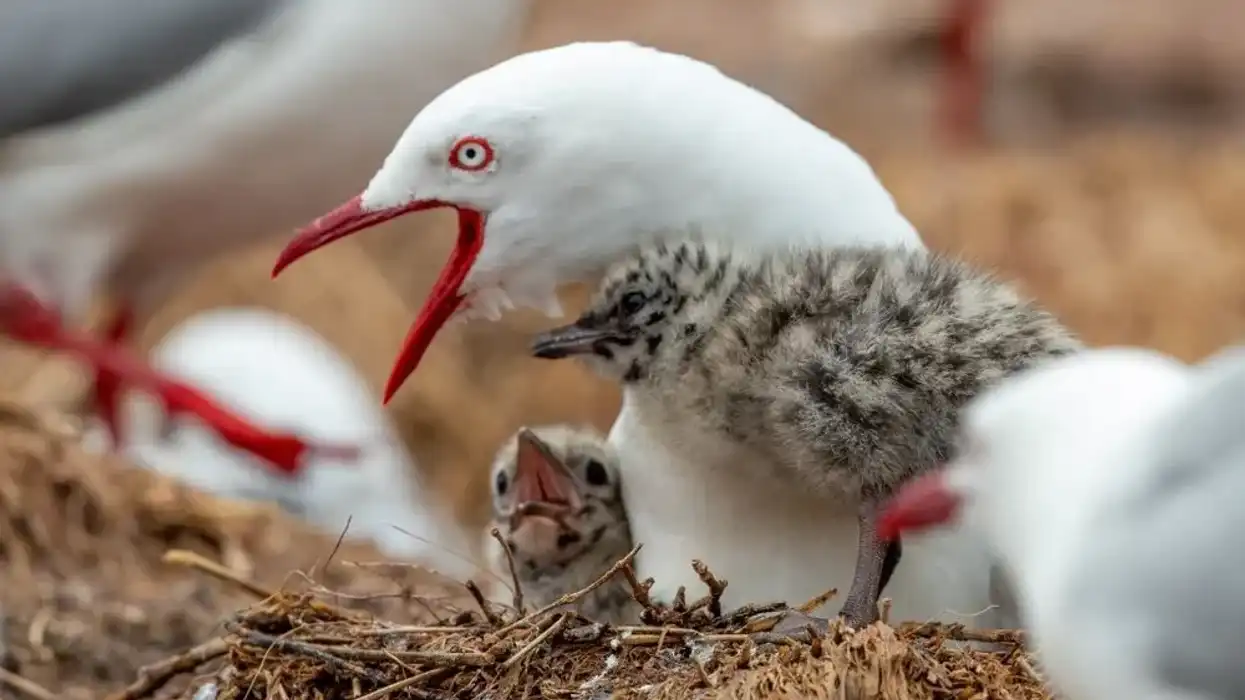Northern fulmars are adorable birds found in continents of North America and South America, Europe, Asia, and East Asian countries. They live in the North Atlantic and North Pacific regions and are usually spotted in many islands like Chagulak, Hall, Semidi, and Saint Matthew near the open ocean and sea.
Fulmars are birds that belong to the Aves class from the Procellariidae family. The meaning of their name is 'a seabird of colder northern seas nearly related to the petrels'. The scientific name of northern fulmars is Fulmarus glacialis.
Fulmars are North American birds that prefer living in cold temperatures as per their habitat. They are migratory birds that migrate south during winter.
Fulmars are active during the daytime and also at night. They tend to fly close to water or sea. Fulmars are one of the few bird species that have a well-developed sense of smell.
There are four color morphs of Fulmarus glacialis, which vary in their distribution during breeding season or while molting. Colors are very dark, medium-dark, light, and very light depending on the species and subspecies.
Northern fulmars look like a gull but usually have a thick neck and straighter inflexible wings. They have a white-colored head and inner body, gray wings, and gray-yellowish beaks. They are medium-sized birds around 17.7-19.6 in (45-50 cm) in length and weigh around 0.9-2 lb (0.4-1 kg) with a wingspan around 40.1-44 in (101.8-112 cm).
Northern fulmars mate during late spring and early summer, mostly in April and May. The process of yolk formation takes 23 days. After the female ovulates, the egg is fertilized, and females return to colonies after breeding for laying an egg.
The egg hatches in four to five days, followed by an incubation period of 47-53 days. The young ones reach their sexual maturity at the age of five years old. This differs in males and females by a few years.
If you like reading about these adorable birds from the Procellariidae family, then you must also give a read to glossy black cockatoo and Iceland gull facts.
Northern Fulmar Interesting Facts
What type of animal is a northern fulmar?
Northern fulmars are birds from the Animalia kingdom.
What class of animal does a northern fulmar belong to?
Northern fulmars are North American birds that belong to the Aves class from the Procellariidae family. The scientific name of fulmars is Fulmarus glacialis.
How many northern fulmars are there in the world?
Fulmars species live in North Atlantic and North Pacific and are found near the open ocean/sea and continental shelf. The population status differs from area to area. The IUCN gives no specified average population in any of the articles or reports. What is known is that the population rate is declining.
As per Carboneras et al. 2016, the global population is approximately 7,000,000 pairs or 20,000,000 individuals. BirdLife International's reports of 2015 show a population rate between 6,760,000-7,000,000 mature individuals in Europe. The current population, however, is unknown.
Where does a northern fulmar live?
They are found in the ocean. Northern fulmars, the North American birds, are found on cliffs scattered around the North Pacific, North Atlantic, and Arctic Oceans. They live near open oceans/seas in Alaska, on the islands of Semidi, Pribilof, Hall, Chagulak, and Saint Matthew.
What is a northern fulmar's habitat?
Fulmars birds prefer living in comparatively colder areas near open oceans and seas. They are found at upwellings along the outer continental shelf and on cliffs of the Arctic islands, North Pacific, North Atlantic, and other islands such as Pribilof Islands, Hall, Chagulak, and Saint Matthew.
They are migratory birds that usually migrate down south during winter. However, several reports show that they rarely migrate after becoming adults. They fly miles searching for food and nesting, especially during the breeding season, and return to colonies.
The fulmar's feeding habits don't affect the ecosystem. Their diet consists of small animals, insects, and marine animals such as fish, squid, shrimp, carrion, plankton, and jellyfish. Fulmars are bird species that have a well-developed sense of smell, similar to a kiwi.
Who does a northern fulmar live with?
They live in pairs with their mate for a certain period during the breeding season. They also live in groups known as colonies.
How long does a northern fulmar live?
The lifespan of fulmar northern American birds is about 60 years. Fulmars construct their nest and are very loyal and faithful towards their nest. They return to the same nest every year during every breeding season.
How do they reproduce?
Fulmars species are monogamous, which means that they only mate with one partner throughout their lifetime. Both male and female parents equally participate in the search of a nesting area before breeding or laying an egg.
The breeding mostly takes place between April and May, and they migrate to the south. They copulate very often, and then both of them depart to forage in the pre-laying period. During the pre-laying stage, the females store sperms in their reproductive tract and start the yolk-making process takes around 23 days period.
After yolk formation, the female ovulates, and fertilization takes place. After that, the female mates return to colonies to lay an egg for approximately three weeks.
Both parents are responsible for taking care of the young one for about two weeks. The incubation period is of 47-53 days. They reach sexual maturity at the age of 5-20 years old.
What is their conservation status?
According to the IUCN Red List, the northern fulmar (Fulmarus glacialis) conservation status falls under the Least Concern category. They are not endangered.
Northern Fulmar Fun Facts
What does a northern fulmar look like?
Northern fulmars species are medium-sized birds from the Procellariidae family usually found in dark gray and white with a light brownish effect on some parts of the body. The northern fulmar is similar in appearance to a gull. Their wings are 40-44 in (101.6-112 cm) long.
There are four color morphs of northern fulmars: very dark, dark, light, and very light. They have thick bill and bluish legs with a thick neck and inflexible wings. They have a white-colored head and inner body, gray wings, and gray-yellowish beaks.
How cute are they?
Fulmars are cute birds from North America usually found in cold areas in the North Pacific and North Atlantic, and they look quite similar to a gull. Arctic fulmars are adorable birds with appealing and unique body features. The young ones look like a snowball with comparatively darker eyes.
How do they communicate?
They communicate through different channels such as visual, tactile, and chemical. They have a good sense of smell which helps attracted areas by fish oil smells. Fulmars' voice is known as 'cracking' or 'braying' at several speeds.
How big is a northern fulmar?
The northern fulmar (Fulmarus glacialis) is a bird found in North America is a medium-sized bird. They are 17.7-19.6 in (45-50 cm) in length. Northern fulmars are four to five times bigger than the Fairy Prion.
How fast can a northern fulmar fly?
Fulmars are thought to be able to fly at a speed of around 29.2 mph (47 kph) on average.
How much does a northern fulmar weigh?
Northern fulmars are lightweight birds and weigh around 0.9-2 lb (0.4-1 kg).
What are the male and female names of the species?
Males are called the male northern fulmar, and females are known as the female northern fulmar. Both parents are responsible for constructing a nest and finding an area for nesting during mating season. They are also equally responsible for taking care of young fulmar.
What would you call a baby northern fulmar?
There is no independent name for the baby northern fulmar, and it is generally known as the young northern fulmar. Young fulmars look like a snowball and reach sexual maturity at the age of 5-20 years. Until then, they live with parents safe from predators.
What do they eat?
Northern fulmars are carnivores with a diet consists of small marine animals. They feed on fish, such as rockfish, squid, shrimp, carrion, refuse, plankton, and jellyfish.
Northern fulmars (Fulmarus glacialis) prey on small insects and small animals. They drink seawater. Fulmars species eat animals having a large amount of fat percentage.
They travel miles in search of food, especially during the breeding season, to feed young ones. Fulmars are sly feeders that generally catch their prey on the surfaces near the open ocean but can take a big dive if needed.
Are they dangerous?
Yes, the northern fulmar is dangerous to humans beings and wildlife because the fulmar produces stomach oil that they store in a section of their stomachs which is risky to many marine animals.
Would they make a good pet?
No, they don't make good pets. They require very cold temperatures to survive and depend on marine animals to feed themselves, which may create problems for the owners to manage daily. They are dangerous to human beings and are illegal in many countries to keep as pets.
Did you know...
The northern fulmar male has a unique habit of opening up its bill and head back while landing. The male fulmar is also more active than females during the mating season.
According to the IUCN, northern fulmars birds are listed under the category of Least Concern. The threats that affect the fulmars are ingestion of plastic and lead, oil pollution, and pesticides, and other toxins. They don't have any impact on humans' lives. However, fulmars play an important role in the ecosystem as predators and also scavengers.
How does a northern fulmar (Fulmarus glacialis) protect itself from predators?
The northern fulmar protects itself from predators by vomiting all over their faces. The fulmar creates stomach oil that it stores in a section of its stomach. The oil in the vomit makes the feathers of the predatory birds sticky, making them unable to fly and fall to their death. It also vomits when you try to scare it.
Is a fulmar a seagull?
No, the fulmar is not a seagull. The fulmar looks like a seagull, but both of them have different features. A fulmar has a comparatively thick neck and stiff wings while taking its flight, unlike the seagulls.
Here at Kidadl, we have carefully created lots of interesting family-friendly animal facts for everyone to discover! Learn more about some other birds from our Egyptian Vulture facts and Bohemian Waxwing facts pages.
You can even occupy yourself at home by coloring in one of our free printable northern fulmar coloring pages.









